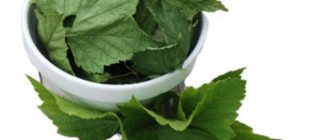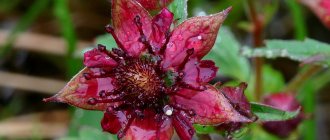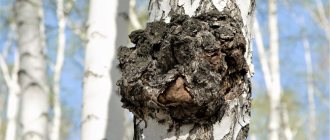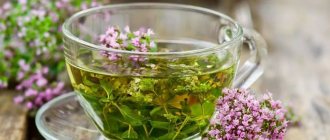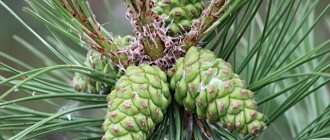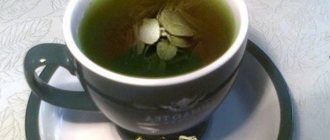Read more about preparing chaga
On an industrial scale, the preparation, drying and processing of the cup is carried out by pharmaceutical enterprises. The raw materials are used to produce dietary supplements, skin care cosmetics and therapeutic and prophylactic drugs. On the shelves you can find products in which tree mushroom extract or decoction is the main active component:
- medicated shampoos, hand and foot creams, lotions;
- teas (restorative and in combination with other medicinal plants);
- bath salts and concentrates for adding to water;
- ointments for treating joints, healing wounds and scars.
Large-scale purchase and processing of raw materials is carried out all over the world, but most actively in Asia - in Japan and China. A significant portion of the proceeds purchased on the territory of the Russian Federation goes to the Celestial Empire. On the territory of the Russian Federation, since the late 80s, the volume of delivery has fallen. Chaga is used among the population by private companies or individual healers. Prices for raw materials (for 2021) are 130–150 rubles.
Important! The cost of harvest depends on the quality of raw materials, freshness and harvesting region. Cleanliness and degree of shrinkage are assessed. A raw, unprocessed mushroom costs no more than 50 rubles kg (price for 2020).
Biologically, the entire mass of the fungus is divided into fruit and spore parts. Both forms can be used, although the fruit form – shapeless black protrusions – is considered more valuable. Proper harvesting of birch chaga involves sorting the raw materials before delivery. Biologically active parts, as raw materials with high value characteristics, are processed to prepare dietary supplements and tinctures for oral administration. Less valuable parts (spore mass) are collected to prepare preparations for external use.
To prepare collections and decoctions, properly dried and crushed chaga pulp is used. The top black layer is not recycled. Therefore, large units with a diameter of more than 7 cm (after cleaning and chopping) are most valued. The list of areas with which harvesters cooperate does not include the Sverdlovsk and Chelyabinsk regions, which are characterized by poor environmental conditions. Due to the large number of defects, entrepreneurs try not to cooperate with private traders who spontaneously decided to make money by picking mushrooms. Citizens planning to organize a business in chaga are advised to first join existing cooperatives and figure out how to properly prepare it in practice.
Features of birch mushroom
What is chaga? In the popular version - a wood sponge, or a tinder fungus. Where to find it in nature? How to prepare and for what diseases can it be used?
Area and distribution features
Where does chaga mushroom grow? Most often, the fungal growth affects birch, which is why it is called black birch mushroom. Less commonly, it parasitizes maple, hornbeam, rowan, beech, ash, alder, and aspen. The main distribution area is the forest and forest-steppe of the Northern Hemisphere, the birch growing zone. Chaga is found in birch groves in Russia, eastern Europe, and North America (in the north).
Botanical characteristics
What does birch chaga look like? This is a black growth with many cracks; it forms on a healthy, living trunk. Appears as a result of the spread of the parasitic fungus inonotus obliquus. Inonotus penetrates the bark, then penetrates deeper into the wood, reproduces by spores, and feeds on tree sap. The parasite lives on the trunk for a long time - up to 15 years. During this period, the spores reproduce well, many threads (hyphae) appear, which eventually form a black growth. The tree gradually dies as the fungus takes over more and more of the wood and weakens the trunk. When there is a strong gust of wind, the affected tree often breaks. When the bark begins to fall off the lifeless trunk, the fruiting body of the fungus appears on the surface. Open pores, blown by the wind, crumble. This is how chaga spreads. The spores find a new “victim” and the cycle repeats. The development of the parasite stops when the tree dies.
Chaga is sometimes confused with the false birch polypore. This parasite has a regular geometric shape. Its color is lighter, unlike chaga, it settles only on sick, old, dead trees. False tinder fungus is prohibited from being used as a medicine!
How to prepare chaga
Chaga can be harvested all year round. However, active nutrients accumulate most in spring and autumn. It is also more convenient to collect the mushroom at this time, since it is more noticeable on the trunk when it is leafless. The growth is collected only from living trees. The mushroom is cut with an ax and carefully separated from the trunk. They take only the dense part of the growth, separating the wood from it. Chaga is chopped into pieces of 3–6 cm. Dried in rooms with good ventilation or in electric dryers at a temperature of 40°C. Raw materials are stored for 2 years.
Chemical composition and healing properties
The richness of the chemical composition and healing properties of chaga are the result of many years of struggle between the tree and the parasitic fungus. Wood produces and accumulates substances that are classified as biogenic stimulants.
- What are the benefits of birch chaga? The growth contains useful metal salts, organic acids, polysaccharides, free phenols, fiber, alkaloids, resins, ash, steroid formations, minerals, colloidal aqueous solutions, dyes, tannins, and glucose.
- Pharmachologic effect. In pharmacology, three main properties of chaga are identified - antitumor, analgesic, and restorative. Also, this plant material has a beneficial effect on the immune system, restores metabolic processes, including in brain tissue. In addition, birch mushroom has antiseptic properties.
What else is chaga useful for? It contains pterins - nitrogenous compounds that inhibit the division of pathological (cancer) cells in the body.
Indications
What does chaga help with? And what are the main indications for its use?
- Oncology. Birch mushroom is an ancient folk remedy for malignant tumors and precancerous conditions. Observations show that chaga is most effective against tumors of the gastrointestinal tract, lungs and skin, but is ineffective against cancer of the brain and bones.
- Gynecology. Prescribed for fibroids, cervical erosion, ovarian cysts, inflammatory processes as a biostimulant and antiseptic. Chaga infusions are used in combination - internally and externally in the form of douches and tampons.
- Gastroenterology. Treatment with chaga for gastric diseases (ulcers, chronic gastritis, polyps) will be effective. Birch mushroom is also used to treat atony (decreased muscle tone) of the stomach and intestines, and dyskinesia (impaired motility) of the gastrointestinal tract.
- Antihypertensive and hypoglycemic agent. Recently, birch mushroom is increasingly taken to reduce arterial and venous pressure. It may also benefit diabetes by lowering blood sugar. In this case, it is better to use the inside of the mushroom to prepare the decoction, and take the decoction itself in a dilution with boiled water (1:5).
- External use. As an antiseptic, birch mushroom is used externally; the drug relieves swelling and inflammation.
Contraindications
Chaga contraindications:
- Pregnancy and lactation period.
- Allergic reaction, individual intolerance.
- Profuse diarrhea of various origins (chaga has a laxative effect).
- Age restrictions (different sources indicate different numbers: it is prohibited to take under 10, 12, 18 years old).
Why are pregnant women and children on the list of contraindications? Chaga is a powerful biostimulant. It is difficult to say how it will behave in the body of a pregnant woman, how it will affect the development of the fetus and small child. Biologically active substances can harm the formation of vital organs. After all, pterins can inhibit the division of not only pathogenic, but also healthy cells.
special instructions
Chaga antagonists include penicillin and glucose. These drugs cannot be used at the same time. You should also pay attention to the diet: fatty, spicy, smoked foods, spices, canned food are excluded, a dairy, plant-based diet is preferable.
Birch mushroom may have side effects. These include: disturbances in the gastrointestinal tract (nausea, heartburn, vomiting, diarrhea, loss of appetite), decreased blood pressure, drowsiness, fatigue or, conversely, nervous agitation, rapid heartbeat. A blood test may show a decrease in the level of leukocytes, platelets, and hemoglobin in the blood. All these signs are possible with long-term use and overdose. Allergy to chaga is rare and manifests itself in the form of chills, urticaria, and fever.
Proper collection of chaga
Chaga is a parasitic infection of the birch trunk. Spores penetrate into cracks, feeding on wood and rotten tree sap. External signs of damage appear only at 3–5 years. Chaga grows to a marketable state by the 20th–25th season. The birch usually dies by this stage; the donor is, in fact, disposable.
Important! According to ecologists, the volume of chaga suitable for collection and storage has decreased by 25% over 10 years. Intermediaries purchasing for China provoked such a reduction in natural reserves, although they caused prices to double during this time. If the procurement of raw materials by foreign companies is not stopped at the legislative level, this trend will continue.
Reducing volumes of raw materials complicates their collection. In forests located near populated areas, it is no longer possible to find good large units. In cooperative conditions, with the availability of special equipment and pre-drawn maps, and within a month, it is possible to prepare no more than 600 kg of dried raw materials for sale. Low earnings from chaga reduce interest in such activities.
Preparation
The season for collecting tree mushrooms is late autumn and winter. These are the seasons when the foliage has already fallen, and the formations growing at a height of 4-5 meters above the ground become easier to see. It is not customary to prepare plates located below. Externally, such formations differ little from high-quality material, but the color of the inside will give away the substitution. Do not take the mushroom from dead trees or fallen dead wood. Responsible pickers have a rule not to cut chaga from isolated trees, but to enter the thicket.
Modern pharmacology makes it possible to make useful drugs from all parts of the mushroom. The growths are carefully cut down so that no wood gets into the raw material, and transported for processing.
Important! Formations that show signs of symbioses with other fungi are not harvested. Foreign spores can change the quality of the harvest and make healthy tea harmful.
Having decided to join the tree mushroom business, you need to start the season by looking for a collection point. In small cities there may not be such things, and transportation to the regions is relevant only in large volumes. If you don’t calculate the distribution chain in advance, then after spending effort and money on collection, you can hear a categorical answer from the chains - we don’t harvest chaga.
If a sales point is found, you can purchase equipment and tools. To harvest wood mushroom you will need:
- skis or other means of moving through the forest on snow;
- a thick knife or hatchet for cutting the mass;
- hooks, ropes or crampons for climbing a tree;
- means for transporting production.
The most valuable is birch growth, but the fungus can form on alder, elm, maple and rowan.
Chaga: beneficial properties for oncology
- Chaga loves to parasitize on the bark of birch trees, so it is often found in birch groves, forest-steppe and taiga. The regions in which the chaga mushroom is most widespread are the middle zone of Belarus, Russia and Ukraine.
- This mushroom can also be seen in the northern zones of Korea and the USA, where it is found in mountainous areas. Chaga grows on a tree for several years and its body can reach a weight of up to 3 kg.
- Small spores of the fungus invade the destroyed cover of the tree bark and over time, an uneven or stepped growth of chaga fungus appears in this place.
- The process of development of the fungus will be noticeable only 4 years after the penetration of spores. These growths are dark in color with light veins. When cut, the flesh of the mushroom has a rusty tint. The thickness of its walls sometimes reaches 15 cm.
- The surface texture of the mushroom is heterogeneous and spongy, with a large presence of cracks. The tree on which the fungus parasitizes gradually fades. Chaga, having destroyed the integrity of the bark, makes its way to the core of the trunk, sucking out all the useful substances from the tree.
Mushroom on a birch
- The life span of the parasitic fungus is up to 20 years. Fungal spores can multiply by air and when an infected tree falls, particles of the fungus are scattered onto neighboring trees.
- The mushroom is known for its medicinal properties in many areas of alternative medicine. It is an antiseptic and antimicrobial natural remedy.
- Has a healing effect on the gastrointestinal tract. Thanks to the tannic composition of the substances, it cures various forms of gastritis.
- Regular use of chaga has a calming and tonic effect on the human body.
- Copes well with dental diseases: periodontal disease, stomatitis.
- Improves sleep, relieves depression.
- Used in the treatment of polyps.
- Regulates the function of the thyroid gland and endocrine system.
- Stimulates and rejuvenates the body, improves water balance.
- Chaga mushroom is also famous for its anti-cancer properties, it prevents the proliferation of cancer cells, eliminates the effects of toxins and removes heavy metals from the body. External and internal use strengthens the immune system, reduces pain in various stages of oncology.
- Strengthening the body with chaga-based drugs helps fight chronic diseases.
- Decoctions and tinctures of birch mushroom reduce blood sugar and cholesterol levels, have choleretic, diuretic and hemostatic properties, regulate sweating, stabilize the functioning of the respiratory system and blood pressure.
- Enhances the effects of antitumor drugs.
- Accelerates metabolism and skin regeneration.
- It has a beneficial effect on the vascular system and renewal of blood composition. It also increases the body’s resistance to infectious diseases.
The beneficial mushroom is used in alternative medicine.
Diseases for which it is recommended to use birch mushroom:
- Diseases of muscles and joints.
- Arrhythmia and atherosclerosis.
- Gastrointestinal diseases: peptic ulcers, inflammatory processes in the biliary system, liver, pancreas.
- Female and male reproductive systems - malfunctions.
- Neuralgic pathologies.
- Infectious and inflammatory diseases of the oral cavity.
- Overweight.
- Skin pathologies: inflammation and wounds, eczema, frostbite, psoriasis.
- Hyperglycemia, diabetes mellitus, abnormal metabolism.
- Oncology and immune diseases. Complications associated with the postoperative period.
Oil emulsion
Tincture
- You can cut birch mushroom from a tree at any time of the year. But it is better to do this in autumn or winter. At this time, the mushroom is more noticeable due to the lack of foliage on the trees.
- Chaga is collected using an ax or a sharp large knife, which is convenient for cutting off the hard growth from the trunk. Only those mushrooms that are placed on living, not old trees are suitable for collection. For medicinal purposes, only the middle of the mushroom is used; the lower and upper parts do not have healing properties. A harvested mushroom retains its beneficial properties for two years.
Cut the mushroom
You can collect Chaga from trees at any time of the year, but experts advise doing it either in early spring or late autumn. It is during this time period that it is easiest to find. This mushroom grows in forests throughout our country. It is worth saying that Chaga cannot be collected from deciduous trees and already dead birch trees, since such mushrooms have absolutely no medical value.
It is best to collect birch mushrooms using a large knife or small ax. The growth must be carefully trimmed at the base. After being separated from the tree, Chaga hardens quite quickly, so it must be immediately cut into small pieces measuring 4-5 centimeters. Then people usually have a question: “What to do with Chaga after collection?”
Treatment
You cannot prepare the collection at home. Even if the area allows, defrosting, drying and storage require a long period of time, humidity conditions and customizable temperature conditions. Industrial dryers are located in mini-workshops or garages.
Drying and grinding to granules or powder are the last stages of the preparation. Due to frost, it is not always possible to carry out initial cutting at the collection site. Processing of raw materials begins with defrosting and cleaning.
How and where does Chaga appear?
Chaga mushroom is a medicinal killer of birch trees.
Chaga is a sterile form of the species Inonotus Obliquus or Polypore Oblique, Inonotus obliquus and belongs to the genus Inonotus, division Basiodimiceta. Since it most often grows on birch, it is called the “birch mushroom”, however, it can sometimes be found on rowan, elm, beech, maple and alder.
Strictly speaking, Chaga is a disease. If you see it on a birch tree, it means that the unfortunate tree is sick, and one day this fungus will destroy it completely.
Chaga mushroom - a healing birch killer
Inonotus obliquus spores take root only in places where the tree bark has been damaged, for example, cracked in winter due to severe frosts or damaged by humans.
Infection with spores causes white heart rot of wood. Initially, light yellow spots and stripes appear in the false nucleus, gradually expanding and merging with each other. In rot, the annual layers are easily separated from each other. Along the perimeter of the rot there is a light brown protective zone, black lines are visible inside, and at the fracture sites there are rusty-brown inclusions of mycelium.
The incubation period of infection lasts about 3–4 years, after which a fruiting body appears on the bark - a dark growth of irregular shape. Its shape depends on the nature of the damage on the tree bark. Chaga grows for a long time and destroys the tree gradually - over decades. After 30 years of growth, it can reach up to 40 cm in diameter, thickness up to 15 cm, and weight up to 5 kg.
The outer surface of the growth is black and covered with numerous cracks, the inner surface has a dark brown tint, and near the tree trunk it turns into brownish-red. The entire growth is permeated with light veins consisting of colorless hyphae.
Gradually, a spore-bearing layer of the fungus develops under the bark, the hyphae of which spread along the trunk in both directions for a distance of up to a meter. In the final stage of infection, ridge-like growths called “thrust plates” are formed that break through the tree bark, exposing the brown-brown spore-bearing layer. The spores themselves are thick-walled, with droplets of oil inside, initially colorless, and then acquiring a pale red color.
For a tree, the growth of chaga on it, sooner or later, ends in death, while the fungus can live for some time on an already fallen and dead tree.
Chaga mushroom - a healing birch killer
How to prepare chaga
The only way to harvest chaga is by hand. The use of equipment is difficult - it is difficult and expensive to deliver it to the thicket of the forest. The collector walks tens of kilometers through deciduous forest - brown and loose snow. The duration of the events is November - February. Later, trips to the forest become dangerous due to the awakening of hungry predators, embittered by the need to protect the offspring that appear during this period.
Under acceptable weather conditions, primary processing of raw materials can be done at the collection site. The pink part in contact with the tree (2–3 cm) is removed from the cut mass. And also cut down or cut off the black crust. Due to such cleaning, in reality, the volume of the workpiece will be 20–30% less than the growth originally cut down. This part is transported for grinding and drying.
Drying and storage
One of the conditions for the preservation of useful substances is the correct gradual defrosting of the extracted mass. The temperature from negative to room temperature is carried out gradually. After defrosting, preparation for processing begins:
- All waste material that differs in color is cut off from the raw material. Only brown-orange pulp should remain.
- The core of the mushroom is cut into cube blocks with a side of 3–5 cm. Large cuts require more drying time.
- The mushroom is dried in the summer on the veranda or open, sunlit space. This method is considered the most gentle in relation to the beneficial properties of the mushroom, but labor-intensive. The weathering period in the open air is 25–30 days, with the condition that more than half of them should be sunny. Large volumes of industrial procurement require the use of special equipment.
Important! Industrial harvesting differs from the artisanal method. It involves processing the collection with inert liquefied gas and dehydration by vacuum sublimation. Felling is also carried out in a gas environment. According to experts, with this processing method, the content of the active chromogenic polyphenolcarbon complex in the mass is 50% higher, and moisture is lower by a third.
The norm for chaga dried in artisanal conditions is 14–15% water. The factory method allows you to obtain granulate with a moisture content of no higher than 8%. The quality of raw materials is checked with a moisture meter and dosimeters.
What you need
For drying at home, you can use a vegetable processor. In this case, the raw materials will have to be crushed smaller so that the cubes fit into the pallets. You can make a dryer yourself by fulfilling the following conditions:
- the temperature inside should not exceed 50%;
- the heat source is not one-sided, the heating is uniform;
- convection is ensured - air flow.
For home use (to make healthy tea and brew for personal use), the mushroom can be dried in the oven. It is important to understand that you can prepare and drink such a folk medicine only after consulting a doctor. Combination preparations also need to be prepared under the guidance of an experienced herbalist.
Step by Step Actions
To prepare mushrooms for yourself, you don’t need complex equipment or tools. You can even buy a mushroom by hand - by posting an advertisement in the village, where in winter there is a lot of labor not engaged in agricultural work. It’s better to prepare chaga yourself to be sure of the quality of the collection:
- You need to cut out the pulp from the mushroom mass.
- The prepared pure mass is cut into cubes.
- The raw materials are dried to 15% humidity or checking that the mass has decreased by 2 times.
- You can grind chaga for brewing in a mortar or coffee grinder.
- The mushroom is stored in linen bags or wicker baskets lined with linen cloth.
- The shelf life of the collection (if moisture is prevented) is up to 5 years.
2847 photos
You can take the mushroom in the form of infusions (alcohol), teas, baths, depending on the expected effect. In fashionable places in Moscow, bars have already appeared offering smoothies with chaga and a unique coffee drink. It can be used internally only after consulting a doctor; there are no contraindications for external use.
Chaga in gynecology
- The anti-inflammatory and wound-healing properties of birch mushroom, as well as the ability to influence the body’s immune system, have been evaluated in the fight against gynecological diseases.
- Treatment of cancer of the female genital tract is especially beneficial. A number of methods are used for this: tinctures, decoctions and chaga tea have a general strengthening effect, and ointment has a wound healing effect.
- In this case, a decoction of birch mushroom helps a lot. You will need 250 g of mushroom mass, pre-soaked in 2 liters of water.
- It is necessary that the mushroom mass becomes soft, then grate it and soak in the same water. Heat the resulting mixture over low heat, without bringing to a boil for an hour.
- Strain the decoction and mix with a decoction of viburnum berries, which should be prepared as follows: pour a glass of dry berries with a liter of cool water and leave for about 6 hours, then boil in a water bath for 1 hour and cool.
- Add the two mixed decoctions with aloe juice and a glass of honey. Dilute the finished mixture with boiled cold water to obtain 4 liters of decoction.
- And leave in the dark and cool for 6 hours until the mixture begins the fermentation process. Transfer to a cool place. Take 2 tbsp orally. 3 times a day with an interval of 1 hour. The cycle of taking the decoction is up to six months.
For women
Chaga for mastopathy
- Birch mushroom can be used both externally and internally for the treatment of mastopathy. Chaga decoctions and tinctures are suitable for this: you can use ointment and rub it on your chest, or make compresses from water solutions.
- Mushroom tea will have a general strengthening effect: up to 3 glasses per day. Divide the daily dose into several small doses.
Possible problems and nuances
Harvesting mushrooms yourself is dangerous. It will not be possible to cut a mushroom at the edge of the forest, and going into the thicket without preparation and equipment is a big risk. The collection can be purchased from the local population or at a pharmacy. To be sure of the quality of the collection, purchase only the whole mushroom or whole cubes, and not powders and granules.
In the annotations to pharmaceutical drugs and dietary supplements, chaga is credited with magical properties, including antitumor properties. Chinese traditional medicine directly states that Inonotus obliquus is a cure for oncology (treats cancer, reduces tumors). Traditional healers sell chaga teas for potency and prostatitis. Proven from the entire list are general strengthening and antiviral properties. Chaga mushroom is a storehouse of vitamins and microelements. It is impossible to treat it as a medicine, use it instead of prescribed medications and refuse traditional medical care.
Chaga - how to prepare and take
- Evgeniy, 45 years old. Before meeting the birch mushroom, I was always skeptical about unconventional treatment. But a stomach illness forced me to try all methods. Chaga coped with the disease perfectly and for two years now my stomach has been in normal condition.
- Svetlana, 34 years old. After removing the tumor, my doctor advised me to drink a chaga decoction. It’s too early to talk about a final recovery, but chaga really helps to quickly restore strength after surgery.
- Zhanna, 54 years old. I have been using chaga for a long time. This is a wonderful inexpensive remedy for many diseases. I believe that such a mushroom should be in every home medicine cabinet. During viral epidemics, to maintain tone in the body, I always drink chaga tea.
Alexey, 31 years old. Permian.
Valentina, 48 years old. Nizhny Novgorod.
